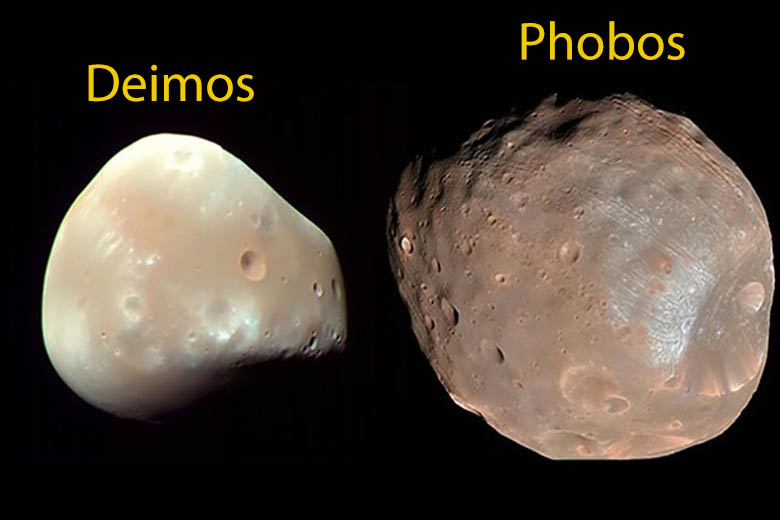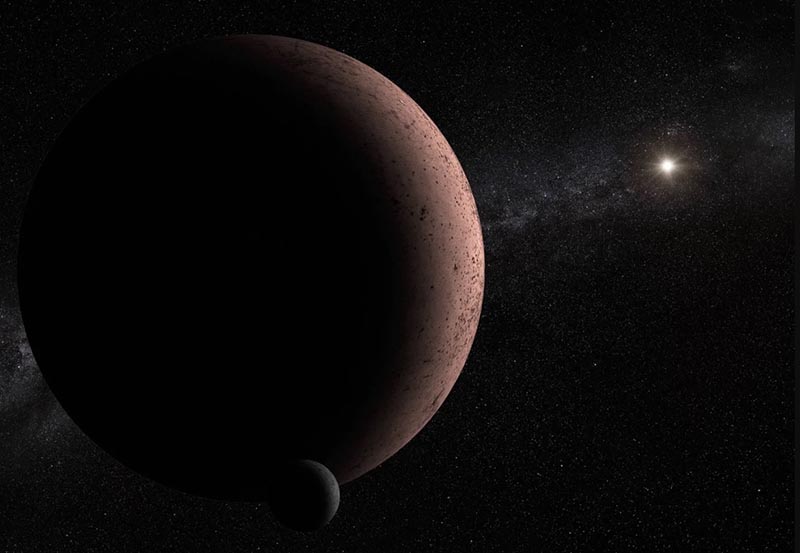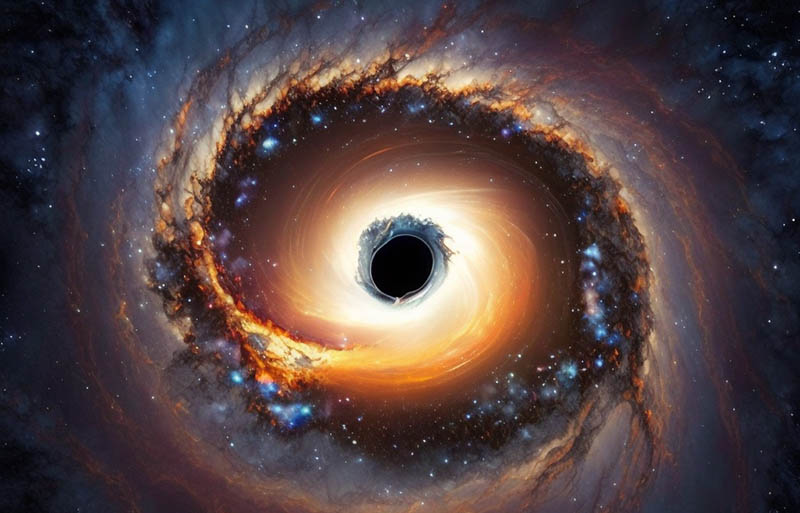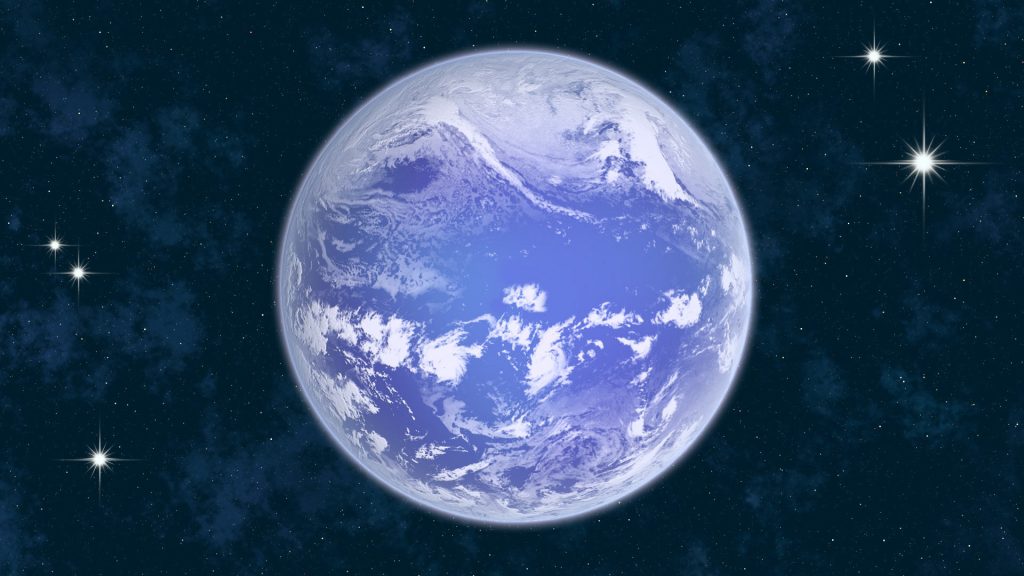Scientists foretold the discovery of Mars moons several centuries ago, but nobody believed them back then. However, the American astronomer Asaph Hall officially discovered them in 1877. Mars moons were named after the sons of Mars, the god of war from Greek mythology – Deimos and Phobos. In Greek, “Deimos” means “dread and terror”, and “Phobos” means “fear”. Here you have 10 cool facts about them ☺
They won’t last forever
The tidal forces of Mars are slowly but constantly changing the orbit of its moons. In other words, the orbit of Phobos decreases with each revolution around the planet, and the orbit of Deimos increases. In the future, Phobos will crash onto the surface of Mars, triggering a global cataclysm on the red planet. Deimos will free itself from Mars’ gravitation and fly away on an endless journey through the Solar system.
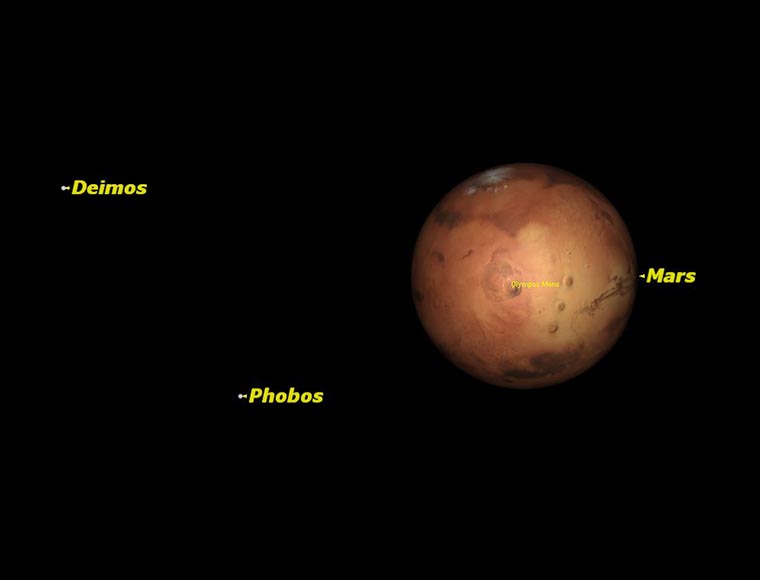
Their origin is unknown
Scientists have several theories about the origin of Mars’ moons. Unlike lots of other moons we know, they don’t have a spherical shape. Actually, we can even say that they look like potatoes 😀 Some cosmologists believe that Phobos and Deimos are asteroids captured by the gravitation of the red planet a long time ago. There is another theory that states that Mars has had one larger moon in past, but it fell apart, and Deimos & Phobos are the parts of this moon.
Mars’s moons look interesting from the planet’s surface
Phobos makes one revolution around the planet in about 7 hours and 40 minutes. It rotates around it three times faster than Mars itself rotates around its axis. As a result, for an observer on the Martian surface, it looks as if Phobos rises in the west and sets in the east, and Deimos rises in the east and sets in the west.
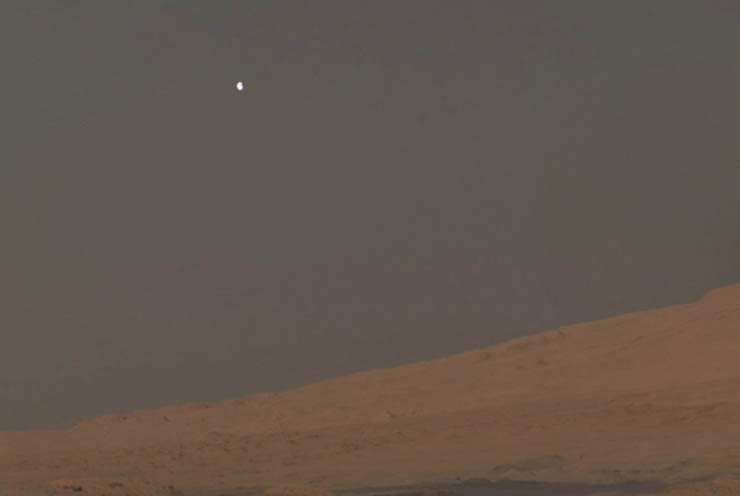
No atmosphere at all
Phobos and Deimos don’t have an atmosphere at all, even a thin one, because their force of gravity is too weak. More than that: the gravitation of Mars moons is so insignificant that it’s noticeably weaker at their sides facing Mars. Yes, they are always turned to the planet by the same side, just like our own Moon. Phobos’ own gravitation is 1719 times less than on Earth. Deimos’s is weaker than Earth’s 3266 times! We can surely say that these moons barely have gravitation at all.
Too close
The average distance between Earth and Moon is about 238855 miles (384400 km), and it took each of “The Apollo” missions a few days to reach the Moon. However, Deimos and Phobos are much closed to their planet! The Mars-Phobos average distance is 3732 miles (6006 km) only. The distance between Deimos and the red planet is about 14600 miles (23,500) km. If someone flies there from Mars, the travel won’t take long.
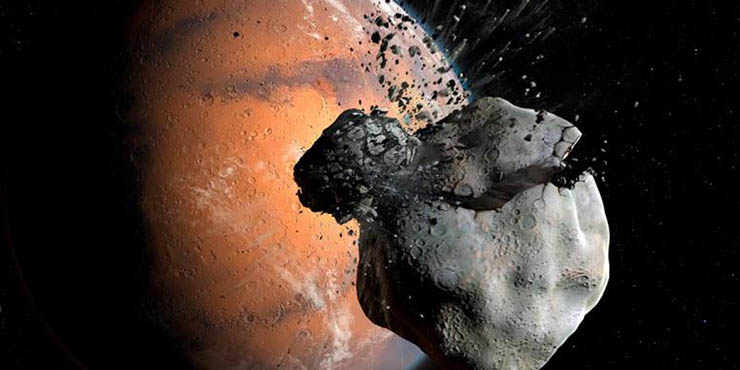
Mars moons are small
Phobos is 158 times smaller than the Moon, and Deimos is 290 times smaller. That’s an approximate calculation, because, unlike the Moon, they don’t have a spherical shape. Deimos was even considered the smallest moon in the Solar system in the past, but later we found out that other planets (and even a few large asteroids!) have even smaller moons.
Not too cold
Phobos’ and Deimos’ surface temperatures range from about 25 °F (-4 °C) on the sunlit side to -170 °F (-112 °C) on the shadowed side. The day here is quite warm, but the night is super cold! As neither of them has an atmosphere, the temperature drops immediately after nightfall. The same happens on our own Moon – it’s always much colder in the shadow than under the sunlight.
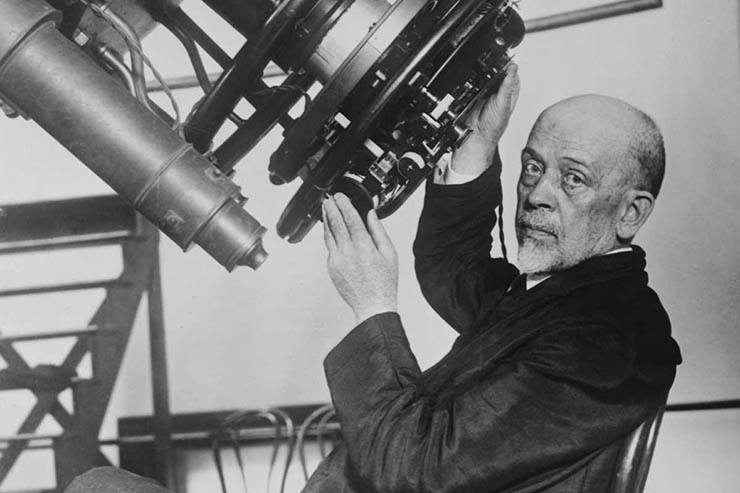
They would not sink in the water
Phobos and Deimos have an extremely low density, comparable to the density of pumice. Scientists believe that Phobos even has a porous structure, and from 25% to 40% of its volume falls on internal voids. The density of pumice is about 1.5 times higher than the density of Mars moons, which means that Phobos and Deimos would float on the surface of the water.
Phobos is just a little larger than New York
The surface area of Phobos is only 618 sq miles (~1600 sq km). The square of New York City is 469 sq miles (1215 sq km). This is just a little less than the square of the whole surface of the largest of Mars’s moons! Deimos’ surface area is 191 sq miles (495 sq km). NYC is more than 6 times larger than Deimos!
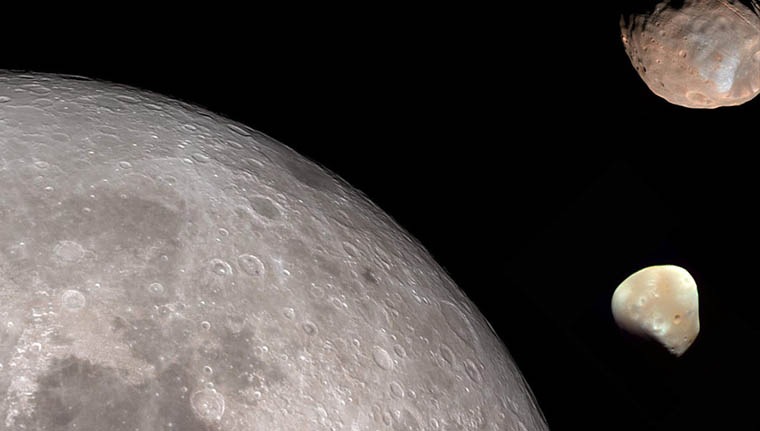
Largest craters
The largest terrain feature on Phobos is the Stickney crater – 5.6 miles in diameter (~9 km). It can be even seen from the surface of Mars! Perhaps, it appeared as the result of some monstrous impact of Phobos with an unknown space body, and this impact nearly destroyed Phobos. On Deimos, only 2 terrain features have names, those are craters Swift and Voltaire. They were named after the famous writers who predicted the facts of the existence of Mars moons years before they were actually discovered.
